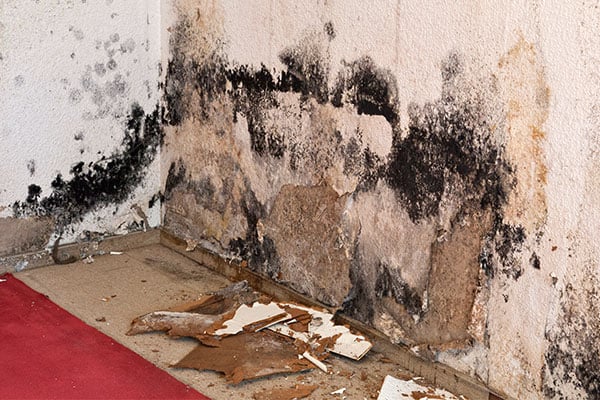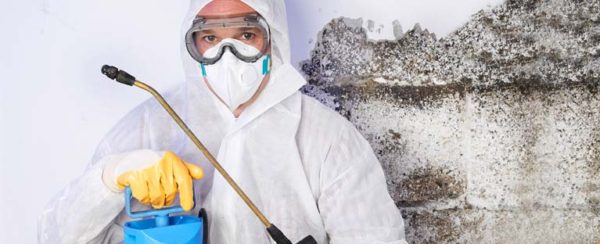Trustworthy Regional Mold Remediation Philadelphia Providers for Effective Solutions
Trustworthy Regional Mold Remediation Philadelphia Providers for Effective Solutions
Blog Article
Precision Mold And Mildew Remediation Methods for Making Certain a Healthy Living Atmosphere
In the world of maintaining a healthy living environment, the efficiency of mold removal methods stands as a critical element that requires precision and know-how. Mold and mildew infestations can be dangerous, impacting interior air quality and posing risks to both building and wellness. Dealing with mold and mildew growth exceeds mere surface cleaning; it demands a thorough approach that includes analysis, targeted approaches, and the use of sophisticated innovations. By exploring the complexities of mold and mildew removal approaches, one can obtain insight right into protecting against mold-related problems and promoting a healthier environment.
Comprehending Mold And Mildew Growth Aspects
Recognizing the essential aspects that contribute to mold and mildew development is essential in developing efficient strategies for mold removal. Mold and mildew calls for 3 primary aspects to thrive: moisture, appropriate temperature levels, and natural product for food. Moisture is probably one of the most critical variable as mold and mildew spores can swiftly colonize and spread out in wet environments. Leaks, floodings, high humidity levels, or condensation provide the needed dampness for mold development. Temperature also plays a significant role, with the majority of mold and mildews favoring temperatures in between 60-80 ° F(15-27 ° C) Finally, mold eats organic materials such as timber, paper, drywall, and fabrics.

Assessment of Mold Infestations
Having actually recognized the key elements that add to mold development, the next critical step is analyzing the degree of mold invasions within a residential property. Mold evaluation entails an extensive assessment to establish the kind of mold and mildew present, the impacted areas, and the severity of the infestation. Professional mold assessors make use of a combination of aesthetic inspection, moisture meters, thermal imaging video cameras, and air tasting to gather information on the mold issue.
Visual examination is typically the primary step in assessing mold and mildew problems, where specialists aesthetically take a look at locations vulnerable to mold and mildew growth, such as attics, restrooms, and basements. This aids identify visible mold development and locations with indicators of water damages or high dampness degrees. Moisture meters are then utilized to detect wetness levels in building materials, helping in situating covert mold and mildew growth behind wall surfaces or ceilings.
In addition, thermal imaging video cameras can be used to discover temperature level differences that may show dampness problems advertising mold growth. Air sampling is one more vital strategy made use of to collect air-borne mold spores, supplying info on the focus and sorts of mold and mildew present in the indoor setting. By making use of these evaluation techniques, experts can accurately examine the mold and mildew problem and establish a reliable remediation strategy to make sure a healthy and balanced living environment.

Implementing Targeted Removal Techniques
To successfully address mold and mildew infestations, implementing targeted remediation techniques is necessary for getting rid of the origin of mold growth and guaranteeing a mold-free environment. These techniques include a click reference systematic technique customized to the certain mold problems identified throughout the assessment stage. By targeting the underlying factors adding to mold growth, such as dampness invasion, poor ventilation, or building product flaws, remediation efforts can be a lot more effective and precise.
One targeted removal technique is to resolve water leaks quickly to avoid wetness build-up, which is a key driver of mold and mildew proliferation. This might involve fixing plumbing leaks, enhancing drainage systems, or boosting waterproofing steps. In addition, improving air flow in wet locations can help minimize moisture degrees, creating an environment much less favorable to mold development.
Furthermore, targeted remediation strategies may consist of getting rid of and replacing mold-infested materials, such as drywall or insulation, and applying antimicrobial treatments to prevent future mold and mildew advancement. Normal tracking and upkeep are critical to sustaining a mold-free environment complying with remediation initiatives Homepage - mold removal philadelphia. By implementing these targeted methods, homeowner can properly battle mold problems and promote a healthier living setting
Making Use Of Advanced Mold Removal Technologies
Advanced mold removal innovations site play an essential duty in addressing mold and mildew problems properly and thoroughly. These systems can catch and filter out mold spores and other airborne fragments, considerably lowering the spread of mold throughout remediation.
Moreover, progressed mold removal innovations consist of infrared cameras that can discover hidden dampness sources within ceilings or walls, aiding in the exact recognition of locations susceptible to mold and mildew development. mold remediation philadelphia. This modern technology allows remediation professionals to target affected locations a lot more accurately, causing a more extensive removal procedure
Ultraviolet (UV) light therapy is another ingenious technology used in mold removal. By leveraging these sophisticated technologies, mold remediation professionals can effectively get rid of mold invasions and produce a much healthier living environment for passengers.
Preventing Future Mold And Mildew Reappearances
With the effective elimination of mold problems making use of advanced technologies, the focus currently shifts towards implementing robust techniques to avoid future mold recurrences. Avoiding mold from reoccurring is critical for preserving a healthy and balanced indoor environment.
Appropriate ventilation is one more necessary element of mold avoidance. Guaranteeing adequate airflow in all areas of the building can help in reducing moisture levels and prevent wetness buildup. Making use of dehumidifiers in damp spaces such as cellars can additionally assist in regulating wetness levels.
Maintaining sanitation and promptly attending to any kind of water damage or spills can even more aid prevent mold development. Routine cleansing regimens should consist of dusting, vacuuming, and wiping down surfaces to avoid the accumulation of mold and mildew spores.
Educating owners regarding mold avoidance methods, such as proper ventilation and dampness control, can also add to a positive strategy in protecting against future mold and mildew problems. By implementing these methods, the risk of mold recurrences can be dramatically lowered, causing a much healthier living environment.
Conclusion
By recognizing mold and mildew growth elements, assessing infestations, applying targeted methods, making use of sophisticated elimination innovations, and avoiding future reappearances, one can properly fight mold concerns. It is essential to prioritize mold and mildew removal to ensure the wellness of passengers and prevent possible health hazards connected with mold exposure.

Report this page